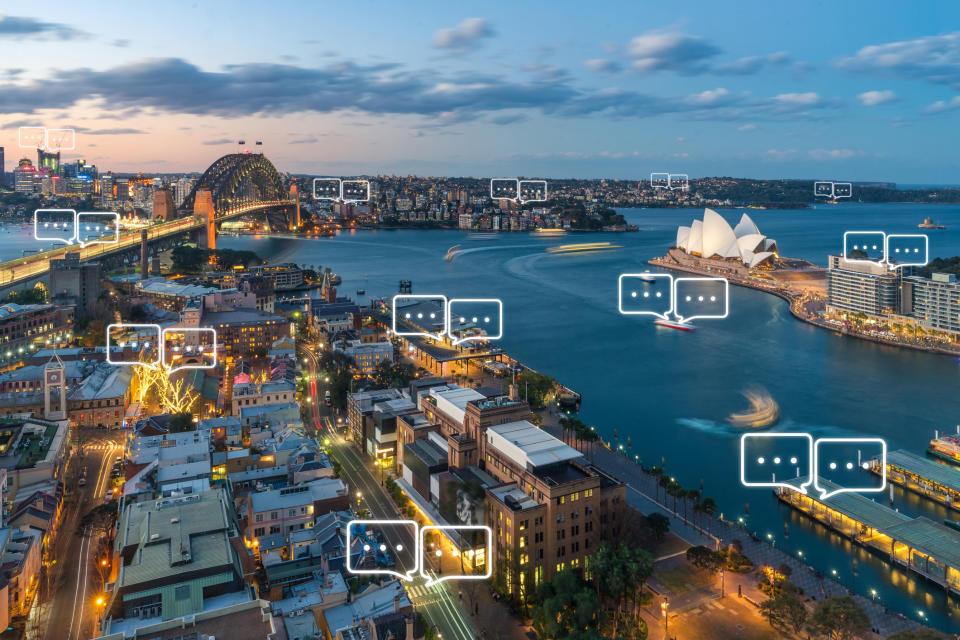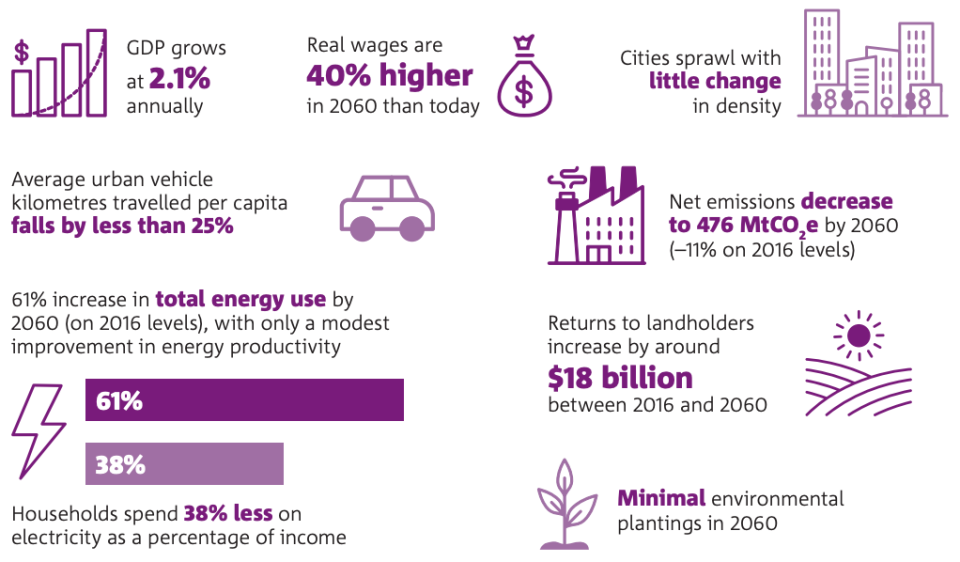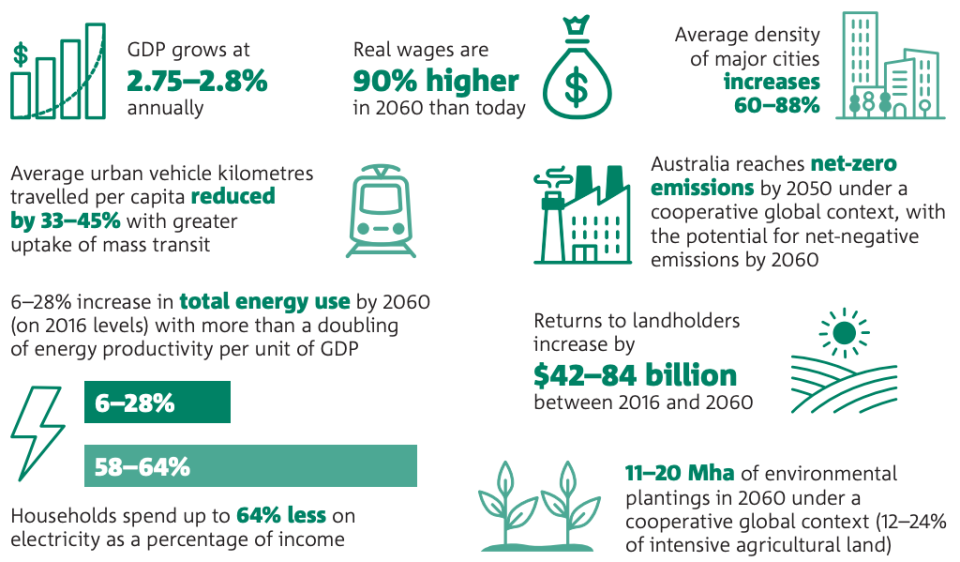Chart: What Australia could look like in 2060

Australia has avoided a recession for 28 years, an oft-quoted statistic as pundits around the country and the globe speculate on the weakened state of the Australian economy.
But a new report by the CSIRO alongside 22 partner organisations have cast doubt on how long the dream run can last.
“There is no guarantee that this good fortune will continue into the future,” the report said. “The world is changing rapidly and Australia will need to adapt to keep up.”
According to the report, there are six major challenges that Australia faces, related to: the rise of Asia, adapting to technological change, dealing with the threat of climate change, tackling a growing and ageing population and its pressure on infrastructure, the lack of trust in governments, businesses and the media, and declining social cohesion.
CSIRO mapped out two visions for Australia: a ‘slow decline’ with a weakened and vulnerable economy, and an ‘outlook vision’ where Australia “reaches its full potential”.
‘Slow Decline’

In this bleak vision, Australia has not faced up to its problems regarding protectionist geopolitics, high density living, high emissions and more – both at home and overseas – with economic growth, investment and education outcomes “all relatively weak”.
The country would be vulnerable to external factors, with productivity growth and wage growth both low.
“Australia’s cities sprawl outwards, making it more difficult for people in the outer suburbs to access jobs, education and services,” the report said.
On top of that, the issue of housing affordability remains a lingering concern, deepening social division and polarisation. Trust in institutions also remains low.
“Although energy policy issues are resolved domestically, the low-emissions energy transition is stymied by a lack of global cooperation on climate change,” the report said.
“Both energy and agricultural productivity remain relatively low.”
It’s a bleak picture, and the consequences are plain to see.
‘Outlook Vision’

On the other hand, ‘Outlook Vision’ is the result of a nation that has taken “decisive action and a long-term view”.
In this bold picture, economic growth would “remain strong and inclusive” if Australian companies used technology to amp up productivity and “create new globally competitive, export-facing industries”.
“Improved educational outcomes give Australians the skills they need to compete in this technology-enabled workforce,” the report added.
Australia’s cities would be “dynamic and diverse global centres” with high-density population, but there would be affordable housing options available as well as equal access to jobs, recreation, education and other services.
Related story: What $750,000 can buy you around Australia this week
Related story: REVEALED: Aussies cop the biggest electricity bills in the WORLD
Related story: CHART: The world's fastest-growing 'wealth markets'
Under this vision, Australia would “successfully transitions its energy system”, resulting in greater reliability and affordability as well as lower emissions.
“If the world cooperates to limit climate change to 2°C, Australia can go even further and reach ‘net zero’ emissions by 2050, driven by significant shifts in land use to carbon plantings.”
What will it take for us to get there?
According to the report, ‘Outlook Vision’ is within our grasp – but we’ll have to make big shifts to get there.
CSIRO and its partners identified the five things that will have to change:
1. Industries need to become more productive, inclusive and resilient
Technology needs to be better adopted; skills have to be invested in for a globally competitive workforce prepared for jobs of the future; and export-facing industries need to be developed.
2. An urban shift is needed so cities can offer equal access to jobs and services
Planning is needed for capital cities to reduce congestion; mixed land use zones need to be created for high-quality housing options to bring people closer to jobs; and infrastructure needs to be invested in.
3. Energy needs to become more reliable, affordable and low-emissions
The transition to renewable energy needs to be managed well; energy productivity needs to be improved; and new low-emissions energy exports need to be developed.
4. A ‘land’ shift is needed for more profitable and sustainable food, fuel production
Food productivity should be invested in, with the help of technology; new agricultural and environmental markets should be participated in; and biodiversity needs to be maintained and restored for a healthier ecosystem and greater productivity.
5. A shift in culture for greater engagement and collaboration
Trust and respect needs to be rebuilt in Australia’s political, business and social institutions; a healthy culture of risk-taking should be encouraged; and social and environmental outcomes should be factored into decision-making processes.
“The difference between these two scenarios is large and worth fighting for,” the report said.
Make your money work with Yahoo Finance’s daily newsletter. Sign uphere and stay on top of the latest money, news and tech news.

 Yahoo Finance
Yahoo Finance 
